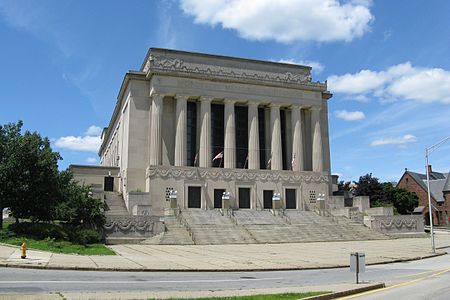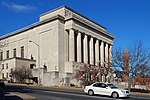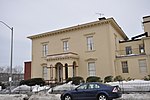Institutional District

The Institutional District of Worcester, Massachusetts is an historic district encompassing a significant concentration of civic and municipal buildings north of the city's downtown area. It is centered on Lincoln Square and Wheaton Square, and includes properties on Main, Salisbury, and Tuckerman Streets. It includes the 1840s Worcester County Courthouse, the War Memorial and Memorial Auditorium, and the former Worcester Historical Society building at 39 Salisbury Street. The 1897 Worcester Art Museum is included in the district, as is the c. 1890 armory building at 44 Salisbury Street. The district was listed on the National Register of Historic Places in 1980.Prior to its institutional uses, this part of Worcester was largely owned by the Salisbury family, whose progenitor, Stephen Salisbury I, opened a store at Lincoln Square in 1772. Salisbury's grandson, Stephen Salisbury III, was a major local industrialist, and began donating and selling portions of the family holdings in the 1880s. His donations included land for the Central Church, Boys' Club, Art Museum, Auditorium, and War Memorial. He was a major benefactor of the museum, bequesting it the family collection. The Salisbury Mansion and Store, now owned by the museum, are located just outside this district.
Excerpt from the Wikipedia article Institutional District (License: CC BY-SA 3.0, Authors, Images).Institutional District
Institute Road, Worcester
Geographical coordinates (GPS) Address Nearby Places Show on map
Geographical coordinates (GPS)
| Latitude | Longitude |
|---|---|
| N 42.272222222222 ° | E -71.801111111111 ° |
Address
Institute Road 10
01605 Worcester
Massachusetts, United States
Open on Google Maps











